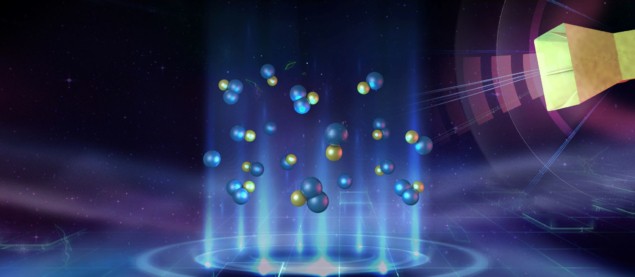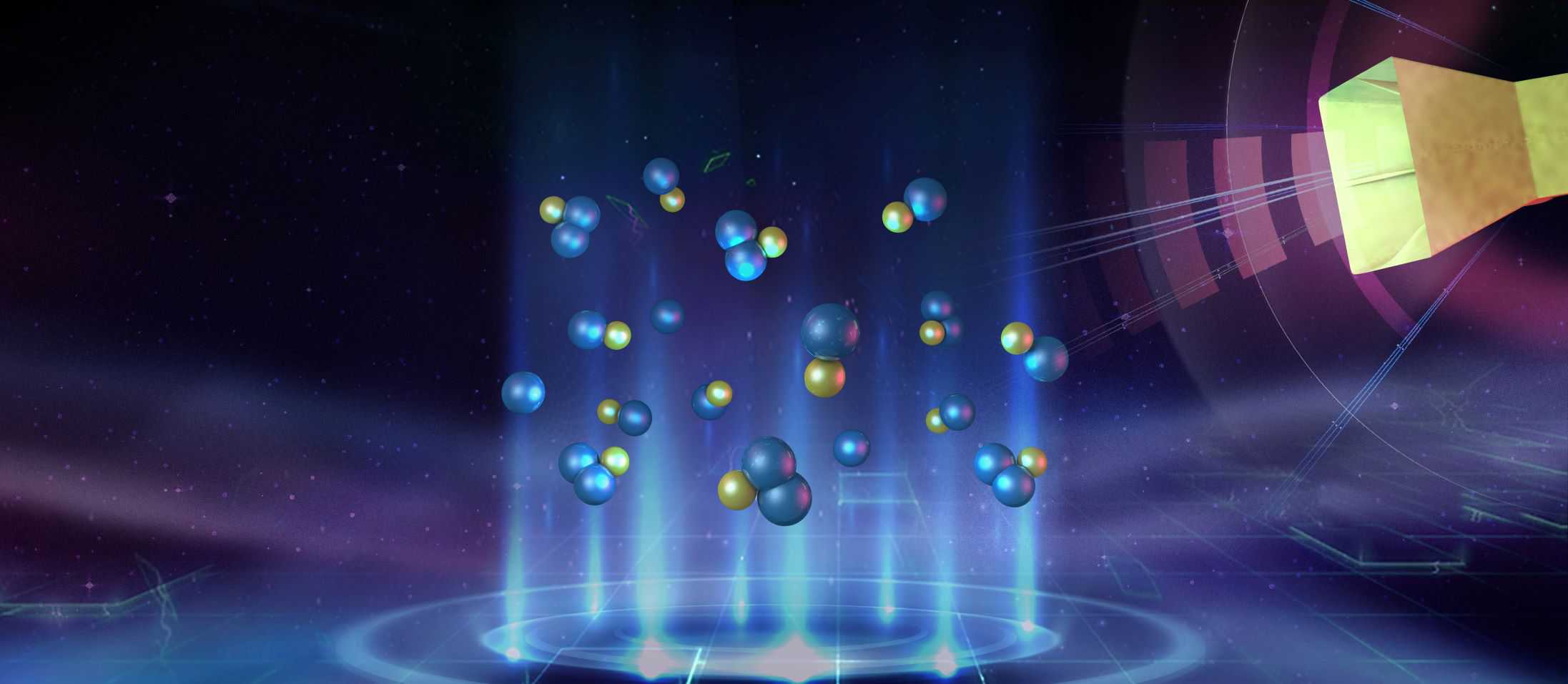
Researchers in China have found strong evidence of ultracold triatomic molecules forming within a mixture of ultracold atoms and diatomic molecules. The result, if confirmed, would provide an ideal pathway to studying chemical reactions on an atomic scale, and could even allow physicists to perform quantum-mechanical simulations of the notoriously difficult three-body problem.
Chemical reactions are so complex that only the very simplest among them can be fully understood with current technologies. Cooling the reactants to just above absolute zero helps, as it limits the number of quantum states they can be in. The problem is that making ultracold molecules is difficult. One approach is to laser-cool the molecules directly, as is commonly done with atoms. However, few polyatomic molecules have the right internal structure for laser cooling to work. Another possibility is to create ultracold atoms and use them as “building blocks” to assemble ultracold molecules. In principle, this method is more broadly applicable, but it has previously only been used to form diatomic molecules. Extending it to triatomic molecules or molecules with even higher numbers of atoms would thus offer many new research opportunities in both physics and chemistry.
Triatomic molecules
In the current work, researchers at the University of Science and Technology of China (USTC) and the Institute of Chemistry within the Chinese Academy of Sciences (CAS) set out to make triatomic molecules by using a so-called Feshbach resonance to create an association between 40K atoms and 23Na40K molecules in their rovibrational ground state. Feshbach resonances occur when the energy of an atomic or molecular bound state (in this case, the triatomic molecule) coincides with the energy of a scattering state. Close to the resonance, the coupling strength between the triatomic bound state and the atom‒diatomic molecule scattering state is greatly enhanced, making it far more favourable for the triatomic molecule to form.
At ultracold temperatures, atoms and molecules can be tuned across a Feshbach resonance by applying an external electromagnetic field. This radio-frequency (RF) association technique is a well-established way of creating diatomic molecules. However, it was not clear whether it would work for triatomic molecules because the coupling mechanism and the coupling strength between the triatomic bound state and the atom-molecule scattering state are both completely unknown.
A new frontier
To drive this free-to-bound transition, the USTC/CAS researchers applied a RF pulse to ultracold mixtures of 23Na40K and 40K. They then monitored the loss of 23Na40K molecules from the mixture by looking for an additional dip in the mixture’s RF spectrum alongside the dip associated with the loss of atoms. The researchers found that the gap between this additional dip, which they identify with the formation of triatomic molecules, and the known atomic transition changed with the applied magnetic field. This is significant because the gap is equal to the binding energy of the triatomic molecule, which is expected to vary as a function of the magnetic field. Measuring it thus allows the researchers to estimate the binding energy of the triatomic molecule.
“Our research is one of the first steps toward preparing ultracold triatomic molecule gases,” says Bo Zhao, a physicist at USTC and co-author of a paper in Nature describing the research. The biggest uncertainty within their experimental results, he explains, is that there is currently no theoretical model to compare them to because ultracold atom-molecule Feshbach resonances are so difficult to understand. The team’s work, he concludes, “largely improves our understanding of the extremely complicated atom-molecule Feshbach resonance”.

Triatomic molecules cooled with lasers
John Doyle, a physicist at Harvard University in the US who was not involved in the study, says the result marks a new phase of doing ultracold chemistry with alkali metal polyatomic molecules – something he emphasizes is brand new for the field. In his view, the most important part of the work is that it provides very strong evidence that triatomic molecules can be created via light-enabled associative methods using ultracold atoms. Such triatomic alkali metal molecules would have many applications in quantum science, and Doyle notes that they are particularly favourable for quantum simulation. This is because alkali metal trimers have a vibrational bending mode that provides fundamentally different “handles” and features advantageous for quantum simulation and precision measurement, compared to atoms or diatomic molecules.
As a next step, the USTC/CAS researchers hope to prepare an ensemble of ultracold triatomic molecules, provided they can find ways of understanding and suppressing the molecules’ decay mechanisms.
